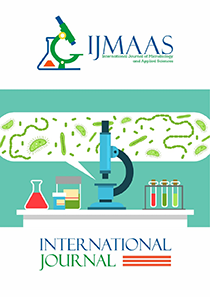Studies on Periodic Fungal Isolation from Freshly Harvested and Stored Sweet Potato (Ipomoea Batatas (L) Lam) Root Tubers in a Constructed Storage Barn
Vol. 3, Issue 2, 2024
KEYWORDS
Aerial environment, Exited species, Emergent species, Soil propagules, Succession
Abstract
Sweet Potato (Ipomoea batatas (L) Lam) is a good source of staple food on the Jos Plateau but farm propagules constituting of fungi and yeast species cause decay of the freshly harvested and stored produce. Freshly harvested and stored sweet potato varieties: CIP4400168, Ex-Igbariam, Tanzania, TIS 8164 and TIS 87/0087 in an In-door storage barn were sampled. The cultivars were identified, evaluated and characterized at the National Root Crops Research Institute (NRCRI) Umudike, Nigeria. The sampled root tubers in the barn were picked prior to storage and every fort-night for a period of 8 weeks. Samples were washed, peeled, pulverized into slurry and the homogenous mixture was used to plate out fungal and yeast species using Malt Extract Agar (MEA) and Sabouraud glucose agar (SGA) culture media respectively. Also the aerial mycoflora of the storage environment was examined. Seventeen (17) species were isolated from the freshly harvested cultivars prior to storage, originating from the experimental farm propagules. Two (2) weeks after storage the number of the isolates increased to 19 species, all the initial fungal isolates on the surface of the cultivars were still present with the emergence of Volutela ciliate; Hanselula sp and Schizosaccharomyces pombe. There was no increase in isolates after 4 weeks of storage but Chaetomium funicola emerged while Volutella ciliata exited. There were further build-up of fungi and yeast species after 6 weeks that rose to 24, at 8 weeks of storage, leading to continuous succession, either originating from the farm propagules or the aerial environment of the barn. Two (2) weeks of the cultivars storage encouraged succession and to avoid this menace the produce should be processed into secondary products with extensive shelf-life.
Current: Vol. 4, Issue 1, 2025

Call for papers
The International Journal of Microbiology and Applied Sciences warmly welcome your valuable articles for publication.
